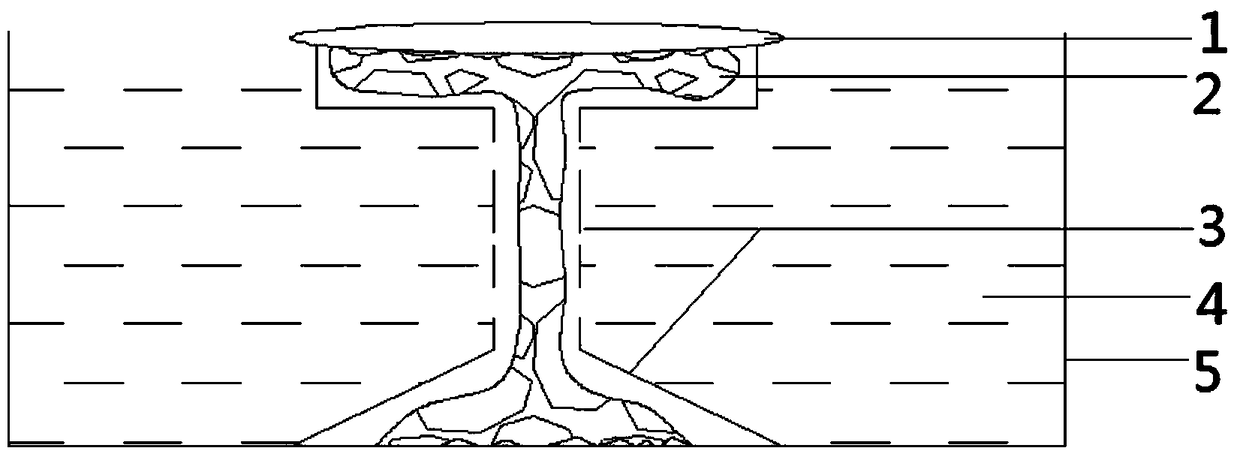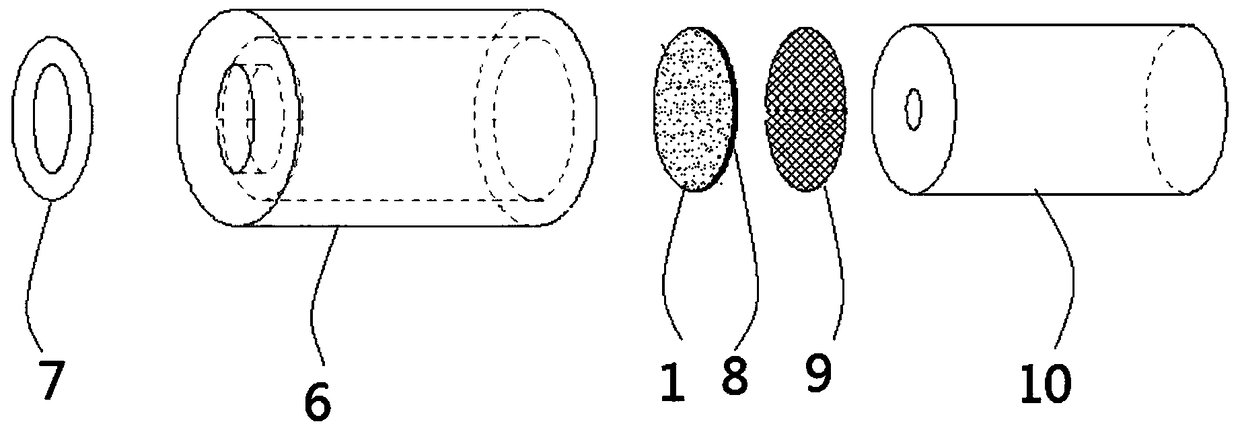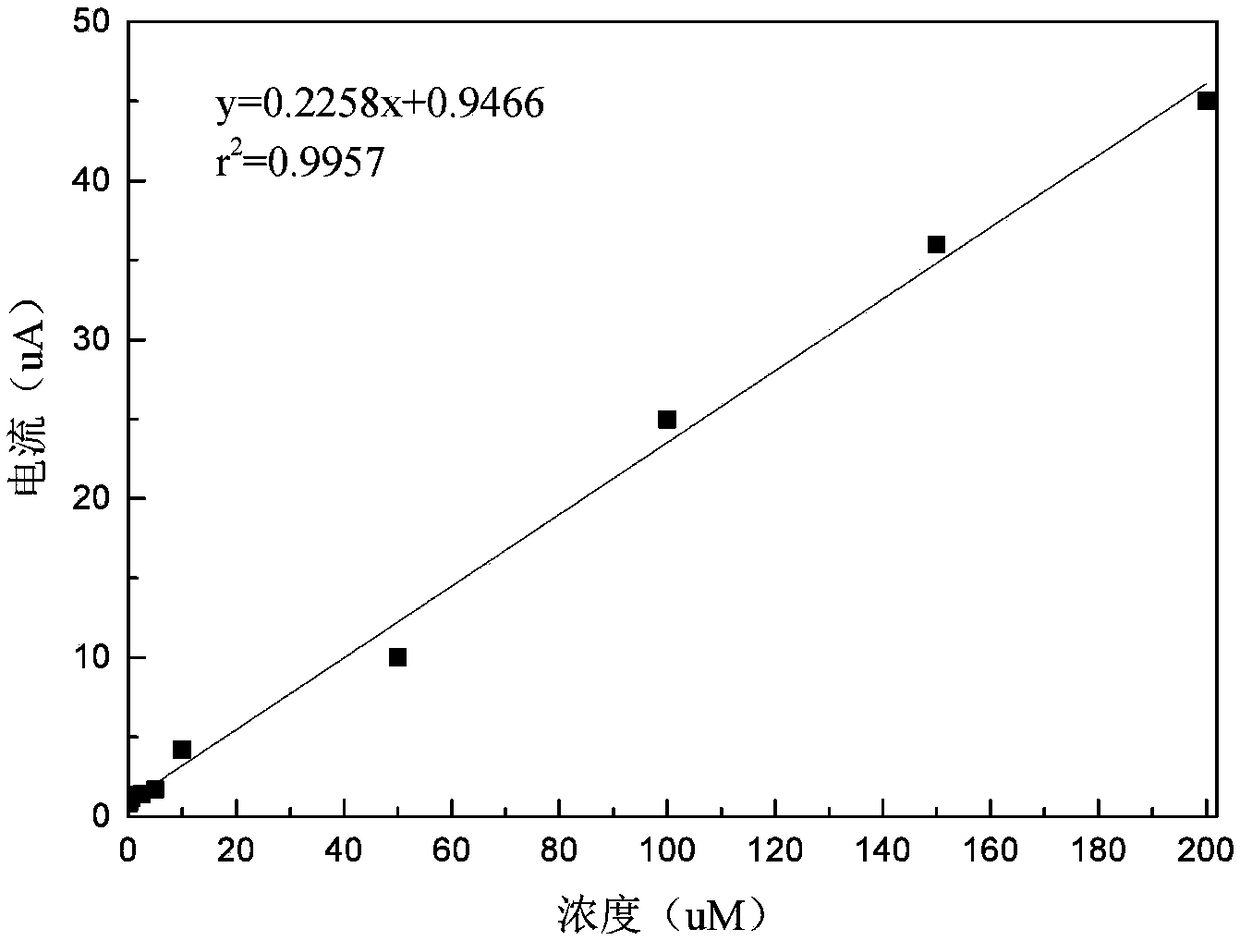Biosensor based on immobilized phellinus igniarius thallus
A technology of biosensor and Phellinus linteus is applied in the field of bioengineering to achieve the effects of real-time detection, improved speed and sensitivity, and simple operation.
- Summary
- Abstract
- Description
- Claims
- Application Information
AI Technical Summary
Problems solved by technology
Method used
Image
Examples
Embodiment 1
[0060] Preparation of Phellinus Phellinus Membrane 8
[0061] The present invention isolates a new type of Phellinus thallus, which is preserved in the General Microbiology Center of China Microbial Strain Preservation Management Committee. The address is No. 3, No. 1, Beichen West Road, Chaoyang District, Beijing. On August 3, 2018, it was classified and named Inonotus baumii.
[0062] Aseptically transfer the Phellinus thallus on the original slant to fresh PDA medium, and cultivate it at a constant temperature at 28°C until the mycelium is overgrown to activate the Phellinus thallus, and store it at 4°C for future use.
[0063] Put the seed culture medium into the triangular flask, insert the activated Phellinus thallus into the seed culture medium according to the aseptic requirements, cultivate it for 3 days at 28°C and 180r / min, observe the growth of the mycelia, and obtain the Phellinus spp. body seed liquid;
[0064] Wherein the PDA medium comprises potato 200g / L, gl...
Embodiment 2
[0073] Such as figure 2 As shown, the present embodiment provides a biosensor based on immobilized Phellinus thalli including gold electrode 10, porous layer 9, Phellinus bacterium film 8, microporous filter membrane 1, rubber O-ring 7 and elastic electrode card Cover 6; Porous layer 9, Phellinus bacterium membrane 8 and microporous filter membrane 1 are sequentially arranged on the surface of one end of gold electrode 10 from the inside to the outside; One end of the microporous filter membrane 1 is provided, and the outer edge of the microporous filter membrane 1 covering the Phellinus bacterium film 8 is pressed and fixed on the surface of the gold electrode 10 through the end of the elastic electrode ferrule 6. The ring 7 is embedded in the elastic electrode ferrule 6 and arranged outside the microporous membrane 8 to fasten the microporous membrane 1 again.
[0074] Wherein, a kind of preparation method of the biosensor based on immobilized Phellinus thallus is as follo...
Embodiment 3
[0078] A method for detecting chlorophenols in waste water with a biosensor based on immobilized Phellinus thallus, the present embodiment detects through a three-electrode system, wherein the three-electrode system includes an Ag / AgCl electrode as a reference electrode, and a platinum disk The electrode is the counter electrode, and the biosensor is used as the working electrode, and the chlorophenols in the wastewater are determined by cyclic voltammetry; specifically, the following steps are included:
[0079] (1) Qualitatively detect and calibrate 2,4-dichlorophenol and 2,6-dichlorophenol through a three-electrode system to determine the oxidation peak potentials of 2,4-dichlorophenol and 2,6-dichlorophenol and according to the changes of 2,4-dichlorophenol and 2,6-dichlorophenol concentrations and currents, respectively establish their linear regression equations; wherein the three-electrode system includes the Ag / AgCl electrode as the reference electrode, and the platinum...
PUM
| Property | Measurement | Unit |
|---|---|---|
| Aperture | aaaaa | aaaaa |
Abstract
Description
Claims
Application Information
 Login to View More
Login to View More - R&D
- Intellectual Property
- Life Sciences
- Materials
- Tech Scout
- Unparalleled Data Quality
- Higher Quality Content
- 60% Fewer Hallucinations
Browse by: Latest US Patents, China's latest patents, Technical Efficacy Thesaurus, Application Domain, Technology Topic, Popular Technical Reports.
© 2025 PatSnap. All rights reserved.Legal|Privacy policy|Modern Slavery Act Transparency Statement|Sitemap|About US| Contact US: help@patsnap.com



